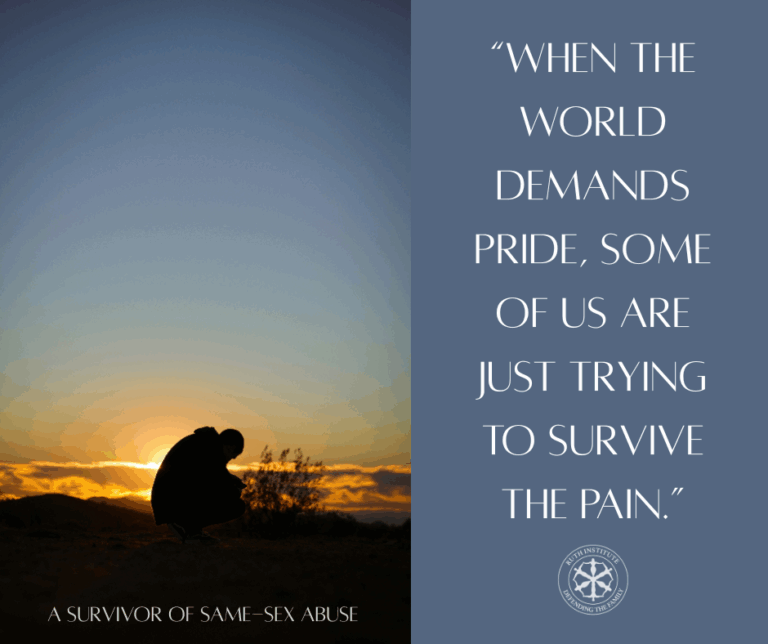By Tyler O’Neil May 28, 2024 at DailySignal.com
Next month, companies will add rainbow flags to their icons and logos, the White House will hold events celebrating LGBTQ individuals, and Target and other stores will likely promote rainbow-themed merchandise. Amid all this “Pride,” the men and women who rejected a homosexual lifestyle will be forgotten.
Why should “Pride” have the entire month of June? That’s a question Jennifer Roback Morse, president of The Ruth Institute, asked herself. She came to the conclusion that if so much of America’s culture is going to celebrate people who identify as lesbian, gay, bisexual, and transgender, she might as well highlight the Americans who rejected those identities.
Morse has christened the first Sunday in June (which is June 2 this year) “Ex-Gay Visibility Day,” in a fitting response to the White House’s commemoration of “Transgender Day of Visibility.”
“It’s not politically correct to talk about ex-LGBT people,” Morse says in a press release provided early to The Daily Signal. “To the gay lobby, they don’t exist, or they’re just lying to themselves or were never really gay in the first place. But I have met many people who have journeyed away from an LGBT identity and are living happy, fulfilled lives with opposite-sex partners.”
Morse mentions research from Father Paul Sullins, a Roman Catholic priest, senior research associate at The Ruth Institute, and former sociology professor at Catholic University, who found that sexual orientation is more malleable than LGBTQ activists claim. The “born this way” narrative doesn’t match up with the results of Sullins’ research.
Sullins previously told The Daily Signal that he doesn’t encourage lesbians, gays, or bisexuals to try to change their sexual orientation unless they feel uncomfortable about it. He emphasized that efforts to change sexual orientation don’t always work, but—contrary to the LGBTQ narrative—they do occasionally succeed.
“When people attempt to change sexual orientation, it is fully successful in my studies about 17 to 20% of the time,” Sullins said. “Most persons who undergo it, meaning about 60 to 65%, report that they are less caught up in homosexual attractions and behaviors and activity.”
Sullins noted that about 30% of the 1,500 lesbians, gays, and bisexuals in a 2020 study on sexual orientation said that they have tried to change their sexual orientation and about 10% said they agreed with this statement: “If I could be completely heterosexual, I would want to do that.”
“So there is a minority of the gay population who wants to change, is not happy with living the way that they’re living,” Sullins said.



